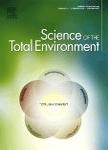版权所有:内蒙古大学图书馆 技术提供:维普资讯• 智图
内蒙古自治区呼和浩特市赛罕区大学西街235号 邮编: 010021

作者机构: Department of Civil and Environmental Engineering Faculty of Engineering and Physical Sciences University of Surrey GuildfordGU2 7XH United Kingdom Institute for Sustainability University of Surrey GuildfordGU2 7XH United Kingdom Hampton Road Teddington MiddlesexTW11 0LW United Kingdom Laboratory of Hygiene and Epidemiology Faculty of Medicine University of Thessaly Larissa41222 Greece Centre for Safety Resilience and Protective Security Fire Safety Engineering Group School of Computing and Mathematical Sciences Faculty of Engineering and Science University of Greenwich GreenwichSE10 9LS United Kingdom Public Health and Medical Public Affairs MSC Cruise Management UxbridgeUB11 1AF United Kingdom School of Earth and Atmospheric Sciences Faculty of Science Queensland University of Technology QLD4000 Australia VTT Technical Research Centre of Finland Ltd Espoo02150 Finland
出 版 物:《Science of the Total Environment》 (Sci. Total Environ.)
年 卷 期:2025年第962卷
页 面:178286页
核心收录:
学科分类:0830[工学-环境科学与工程(可授工学、理学、农学学位)] 1004[医学-公共卫生与预防医学(可授医学、理学学位)] 1002[医学-临床医学] 1001[医学-基础医学(可授医学、理学学位)] 08[工学] 0837[工学-安全科学与工程] 0824[工学-船舶与海洋工程] 0714[理学-统计学(可授理学、经济学学位)] 0701[理学-数学]
基 金:HEALTHY SAILING project has received funding from the European Union's Horizon Europe Framework Programme (HORIZON) under Grant Agreement number 101069764. Funded by the European Union. Views and opinions expressed are however those of the author(s) only and do not necessarily reflect those of the European Union or the European Climate Infrastructure and Environment Executive Agency (CINEA) or the cruise company. Neither the European Union nor the granting authority can be held responsible for them. This work was funded by UK Research and Innovation (UKRI) under the UK government's Horizon Europe funding guarantee [grant numbers 10040786 and 10040720]. This work has received funding from the Swiss State Secretariat for Education Research and Innovation (SERI)
摘 要:Large passenger ships are characterised as enclosed and crowded indoor spaces with frequent interactions between travellers, providing conditions that facilitate disease transmission. This study aims to provide an indoor ship CO2 dataset for inferring thermal comfort, ventilation and infectious disease transmission risk evaluation. Indoor air quality (IAQ) monitoring was conducted in nine environments (three cabins, buffet, gym, bar, restaurant, pub and theatre), on board a cruise ship voyaging across the UK and EU, with the study conducted in the framework of the EU HEALTHY SAILING project. CO2 concentrations, temperature and relative humidity (RH) were simultaneously monitored to investigate thermal characteristics and effectiveness of ventilation performance. Results show a slightly higher RH of 68.2 ± 5.3 % aboard compared to ASHRAE and ISO recommended targets, with temperature recorded at 22.3 ± 1.4 °C. Generally, good IAQ (2 mainly varying between 400 and 1200 ppm. The estimated air change rates (ACH) and ventilation rates (VR) implied sufficient ventilation was provided in most locations, and the theatre (VR: 86 L s−1 person−1) and cabins (VR: 20 L s−1 person−1) were highly over-ventilated. Dining areas including the pub and restaurant recorded high CO2 concentrations (2000 ppm) potentially due to higher footfall (0.6 person m−2 and 0.4 person m−2) and limited ACH (2.3 h−1 and 0.8 h−1), indicating a potential risk of infection;these areas should be prioritised for improvement. The IAQ and probability of infection indicate there is an opportunity for energy saving by lowering hotel load for the theatre and cabins and achieving the minimum acceptable VR (10 L s−1 person−1) for occupants comfort and disease control. Our study produced a first-time dataset from a sailing cruise ship s ventilated areas and provided evidence that can inform guidelines about the optimisation of ventilation operations in large passenger ships, contributing to respiratory health, i